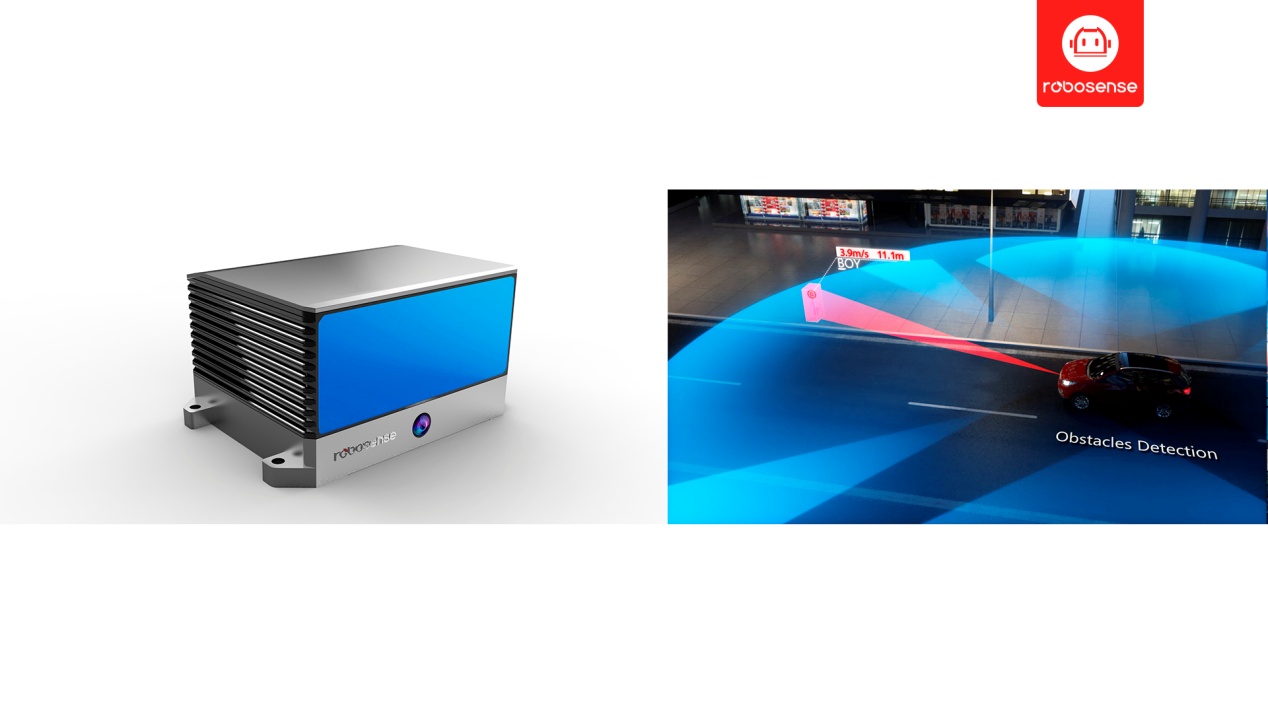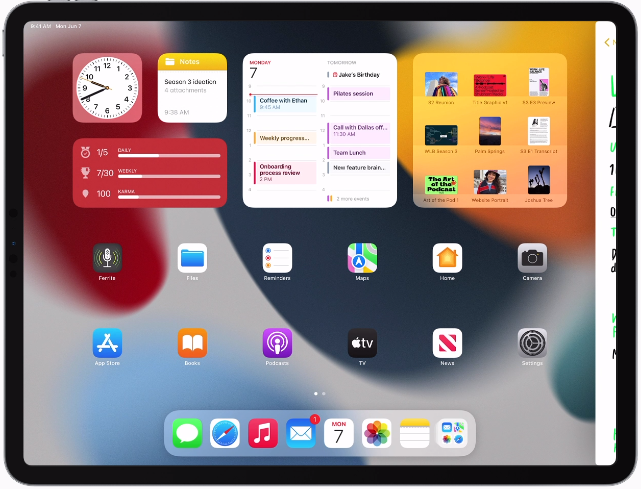A LiDAR REVOLUTION: ROBOSENSE LAUNCHES INTELLIGENT AUTONOMOUS DRIVING LIDAR SYSTEM WITH “GAZE” FUNCTION SIMILAR TO HUMAN EYES

Based on MEMS Solid-State LiDAR & AI Algorithms
With more than 10 years algorithm developing experience of Robosense team, , the RS-IPLS system, based on high-performance MEMS solid-state LiDAR, outputs the highest resolutioncolor point cloud data by merging the underlying hardware of 2D imagery with the unique RoboSense RS-LiDAR-Algorithm deep learning sensing algorithm developed specifically for autonomous driving. The intelligent detection algorithm achieves target level information that adjusts the Region of Interest (ROI) detection area in real-time with no delay.
The algorithm is based on the RoboSense team’s ten years of research and technology experience in the field of LiDAR environment-aware algorithms. In early 2017, RoboSense became the first LiDAR vendor in the world to introduce the laser-aerodynamic environment-aware RS-LiDAR-Algorithms, combined with LiDAR hardware to provide a large number of partners with P-series LiDAR solutions based on different application scenarios.
The RoboSense “Gaze” Technology
The innovative RS-IPLS features the new RoboSense RS-LiDAR-Gaze “Gaze” Technology. When the system’s field of view perceives a target of interest, it initiates a “gaze” processing mechanism that instantly locks the target for ROI processing, thus achieving the clearest and most stable environmental data. The LiDAR under-the-system architecture maintains a high degree of vigilance of the surrounding environment, constantly capturing the areas of interest, allowing the “gaze” to transfer efficient and high-quality feedback in the field of view.
The RoboSense RS-IPLS Intelligent Perception LiDAR system also provides richer three-dimensional spatial data information (X, Y, Z, R, G, B) in real-time from the bottom layer, which reduces the time delay normally caused by external fusion. Data pre-processing is performed by the AI algorithm, with the area of interest repeatedly detected for farther detection distance and more accurate perception results for autonomous driving, with reduced data processing stress to the central data processing unit.
The RoboSense RS-IPLS Intelligent Perception LiDAR System is based on the RoboSense solid-state LiDAR technology, the RS-LiDAR-M1pre (introduced at CES 2018), which combines the RoboSenseRS-LCDF LiDAR and camera fusion technology, the RS-LCDF technology, RS-LiDAR-Algorithms, and RS-LiDAR-Gaze technology. The RoboSense RS-IPLS pioneered the fusion of MEMS solid-state LiDAR technology with LiDAR-Cam deep fusion technology, AI sensing algorithm, and intelligent detection technology. The combination of these four technologies allows the LiDAR system to go beyond the sensor level, linking the sensor layer and the sensing layer at the system level, so that autonomous vehicles have similar abilities as the human visual system.
RS-IPLS –LiDAR’s Self-Revolution
“LiDAR needs a self-revolution. The market needs a car-grade product that can be mass produced in the tens and hundreds of thousands. You have to guarantee low cost and provide high performance to ensure the safety of your vehicle,” said Mark Qiu, RoboSense Co-founder. “This has driven us to create a whole new sensor system technology based on the perfect extraction of environmental information and large-scale perception of the environment, with the constant capture of areas of interest, focusing on effective information.”
Traditional Mechanical LiDAR Solutions have Become Inadequate for Autonomous Driving
Automated driving has almost the same long history as the automobile manufacturing industry. In 1913, Ford developed a production line for the mass production of cars. At the same time that carriages were replaced by cars, people began to imagine autonomous driving. In 1925, the American team of Francis P. Houdina developed the first “driverless car.” However, due to the lack of accurate and reliable sensors, the autonomous driving industry did not flourished like the automotive industry has in the past 100 years. Over the past decade or so, however, the emergence of mechanical multi-line LiDAR has solved the problem of high-precision three-dimensional environment perception, and the autonomous driving industry has entered a period of growth. LiDAR helps autonomous vehicles keep the promise of safety for humans, propelling the rapid explosion of the autonomous driving industry, but at the same time, requiring more demands on LiDAR, such as low cost, the need for car level production, high performance, and intelligence, etc.
Traditional mechanical LiDAR is very expensive. The 64-line product currently being sold is officially priced at $80,000, more expensive than a brand new Tesla car! RoboSense’s mass production price of the RS-IPLS is only $200 USD, 1/400th of the traditional 64-line LiDAR, with a several thousand or even tens of thousands faster response speed. Traditional mechanical LiDAR consists of multiple sets of transmitters, receivers, precision optics, micro-control motors, and other components, which are difficult to manufacture and require expensive materials. In addition, due to difficulty of integration and optics, mechanical LiDAR not only has a long production cycle and high production costs, but also has a difficult time meeting the stability and reliability requirements of standard vehicles. Because of these reasons, traditional mechanical LiDAR technology has become inadequate.
“The new RoboSense RS-IPLS MEMS based technology is intelligent, accurate, lower cost, and faster— and is poised to take over the market,” concluded RoboSense’s Mark Qiu.
RoboSense RS-IPLS Intelligent Perception LiDAR System Technology Features:
- Accurate “gaze” function similar to human eyes: when the field of view perceives a target of interest, the RS-IPLS will initiate a “gaze” processing mechanism that instantly locks the target for Region of Interest (ROI) processing to achieve the clearest and most stable environmental data.
- Safer driving with AI perception: an AI-aware algorithm specifically designed for autonomous driving. It improves the detection of distance, accuracy, and opacity of the target object, improving the safety of the self-driving vehicle for detection with less computing power.
- Color point cloud with 3D dimension and RGB information: the technologies are fused to instantly detect two-dimensional color information onto 3D high-precision spatial data, providing color point cloud data after time and space synchronization, so RS-IPLS detects more details of road objects.
- Highest Resolution: the MEMS solid-state LiDAR RS-LiDAR-M1Pre provides the highest resolution.
- Lowest Cost: the RS-IPLS is low cost, priced for mass production at $200 USD, 1/400ththe price of traditional LiDAR.
- Real-Time Data with No Delay: the intelligent detection algorithm achieves target level information that adjusts the ROI detection area in real-time with no delay.
- Farther Distance & More Accurate: richer three-dimensional spatial data information (X, Y, Z, R, G, B) reduces the time delay and provides further detection distance and more accurate perception.
About RoboSense
Founded in 2014, RoboSense is the world’s leading provider of LiDAR environment-aware solutions designed to provide a higher performance, safer, more reliable, and lower cost LiDAR system for autonomous vehicles. The first hardware and algorithm-based solution provider for autonomous driving, RoboSense believes that robots have an environmental perception that transcends human eyes. Since its inception, RoboSense has adhered to the underlying core technology innovations, from chips to LiDAR sensors, to intelligent sensor systems that incorporate AI aware algorithms. RoboSense maintains strong innovation capabilities and continues to innovate to lead the industry.
The current RoboSense products include different types of hybrid solid-state LiDARs, as well as P-series hardware and software solutions for different scenarios of autonomous driving. At CES January 2018, RoboSense demonstrated its revolutionary LiDAR product with its own patents. Currently, RoboSense has entered into strategic partnerships with many top car companies, tier one manufacturers, and technology companies with a global reach. For more information about RoboSense, please visit the website: http://www.robosense.ai.






